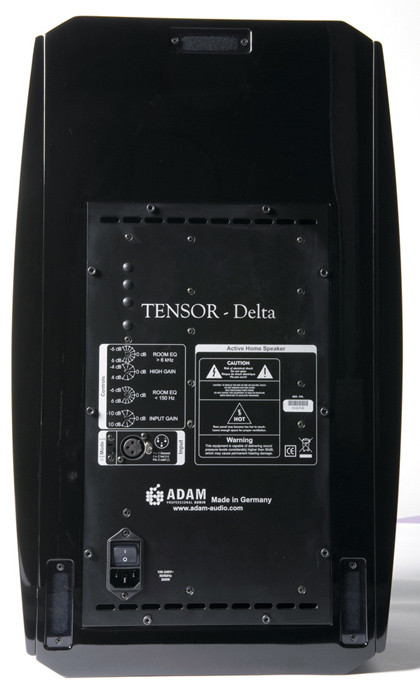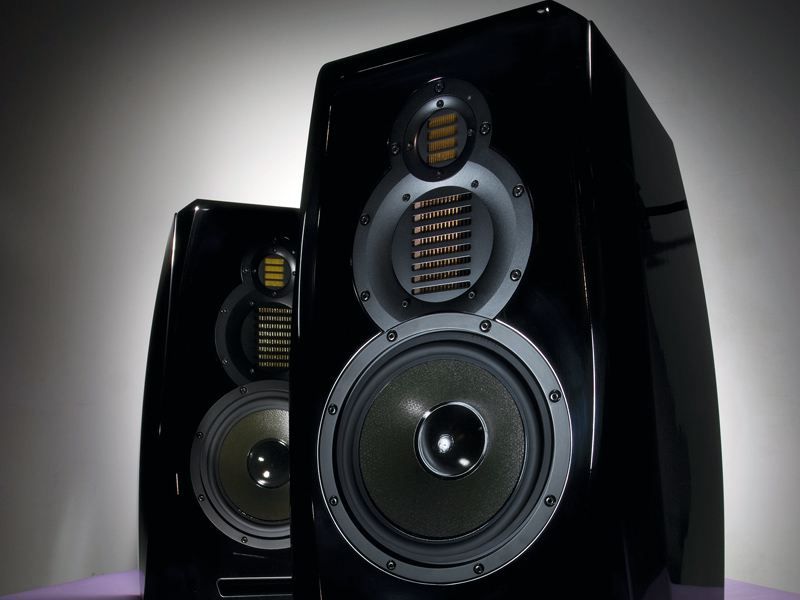TechRadar Verdict
It is not perfect and it is certainly not cheap, but the Delta Tensor brings a powerful range of capabilities to to its performance and is a fine wedding of professional and domestic hi-fi technologies
Pros
- +
High-tech drivers assure strong power handling
- +
Articulate, refined performance
Cons
- -
The bass doesn't have quite the muscle or depth
- -
This could be partly due to the relatively compact enclosure
Why you can trust TechRadar
Until recently, Adam Audio hadn't figured heavily in the UK's domestic hi-fi market. Yet, in reality, the company is far from being an insignificant player – especially in the studio and professional markets for active monitoring speakers and can be found in places like the Abbey Road Studios, as well as the BBC and Fox Digital.
Not all its speakers are aimed at the pro market, however, and they're not all active designs by any means. This test model, the Tensor Delta, is active and although it looks rather like a studio monitor, Adam Audio describes it as a domestic hi-fi speaker.
Apart from all the other qualities that active speakers bring to the party, they simplify system configuration. Less wiring, hence less boxes. You may not appreciate the relevance of this, but your wife certainly will.
The black gloss finish – there's an all-silver and a black/silver option too – tends to reinforce the impression that the speaker really does lean towards the world of home audio, though almost everything else about the Delta suggests that it could have started life as a compact mid-field monitor.
The Tensor Delta is not particularly large by domestic standards. Its shape is also unfashionably short and squat –dumpy even– although it's well-finished and attractive when viewed at close quarters. More importantly, it fits snugly in a mid-size living room without danger of visually dominating its surroundings.
Our test speaker might even have a special relevance as a kind of crossover design for those who have built their own home studios. The clumsy term 'prosumer' having already been coined for ranges like this.
Adam Audio doesn't have a particularly long history, but it does have a strong technology base and has engineered some excellent drive units. The company is based in Germany and only a year ago moved into a new manufacturing facility in Berlin, which includes design, testing, production control and distribution, all under one roof.
Sign up for breaking news, reviews, opinion, top tech deals, and more.
Tensor is the upmarket range, the Delta being one of the smaller models, though it doesn't lack ambition. It is a full-on, fully active three-way design intended for standmounting.

Tensor Delta is really not big enough to be stood directly on the floor, which would affect the both LF and HF balance adversely. But you'll need fairly hefty stands, not so much to handle the weight, which at 29kg is not unexpected for a speaker this size, but to ensure stability.
A bass reflex design, the TD (a more palatable product name than the real one, so we'll call it that for now) uses proprietary X-ART (eXtended Frequency Response) drivers and is the smallest speaker in the Adam Audio range to use this technology.
The tweeter uses an air-motion transformer (AMT), which involves a pleated diaphragm, moving like an accordion's bellows, though the diaphragm displacement is very small and power handling is correspondingly large.
There are a number of other benefits to this technology, for example in the area of heat dissipation, better air-coupling and improved cooling. And that's not forgetting superior phase response, a flatter impedance curve and more dynamic behaviour. The midrange driver is essentially a scaled up version of the same thing.
The bass driver is also a high-tech unit, with a sophisticated sandwich cone, though it at least looks conventional enough. It's key feature is a honeycomb Kevlar sandwich Nomex cone and the system is powered by PWM (Pulse Width Modulation) Icepower modules from Bang and Olufsen.
A control panel on the back of the speaker has various functions, including by-passable auto power off/on switching, a level control unit and a similar control to adjust bass gain by up to +/-10dB. Finally, a Room EQ control varies the tuning in the up to 150hz region.

Sound quality
We were impressed and surprised with the Tensor Delta. Surprised because we expected a big, slightly unsophisticated sound, which handled high-power levels well, but which might be a little lacking in some of the niceties that a thoroughbred speaker brings to the party.
In fact the TD does handle power well, but it is also refined and well-behaved. The speaker sounds solid, but within reason it does so over a very broad range of volume levels.
Part of this sophistication clearly comes from the tweeters, which pay a debt to the excellent Heil Air Motion transformer and the midrange units that are scaled-up versions of the same thing – which means they have a natural synergy and common voicing. They're fast, assured, refined and finely detailed.
The frequency response appears to shelve upwards slightly in the treble at the nominal settings, but not so much that it makes everything sound brittle and edgy, which is an obvious danger. Remember you can have a reasonable stab at correcting this using the tweeter control on the back panel.
The bass works well too, when allowances are made for the relatively compact nature of the design. The bass driver is, at least, partly responsible for this, but the well-controlled cabinet is just as likely to be responsible. The bass has reasonable depth, good stability and fine control, the latter a welcome finding.
Put it all together and you have a speaker that can sound a little bright at times, but which images precisely. It has a decent sense of depth and is even better laterally. It always sounds stable and well-anchored in space and, for once, it hangs together better than many other three-way speakers .
The TD manages to straddle two often mutually incompatible worlds, that of the domestic hi-fi speaker and that of professional studio monitors. But, unlike some in its class, which could be described as taking a stab at all the bases, while being master of none, this speaker actually lives up to most of the stereotypes.
It has the refinement and finesse of a good home loudspeaker, but one with all the panache and guts of its studio equivalent.
One system-matching issue concerns the stands, which because of the unusual form factor of the speakers, should have a large platform to sit them on and a base with a broad enough footprint to ensure stability. Blu-Tack between the TD and its stand is mildly beneficial sonically and provides some rudimentary protection when brushing against the speaker.
But we'd be concerned about leaving this model in a room with small children, if the speakers are not anchored in place.
This is a very likeable and very effective loudspeaker with a broad range of applications, Being active and self-contained means that it is easy to deploy. But the nature of the beast means there is no ready upgrade path, for example, if you don't get along with the amplifier.
There is a certain something, a residual character that is fundamentally slightly flat and mechanical sounding when compared to the very best of the more conventional designs. But the rear panel adjustment means you can go at least some of the way to fine tuning its output to its environment. And that's all to the good.
Follow TechRadar Reviews on Twitter: http://twitter.com/techradarreview
